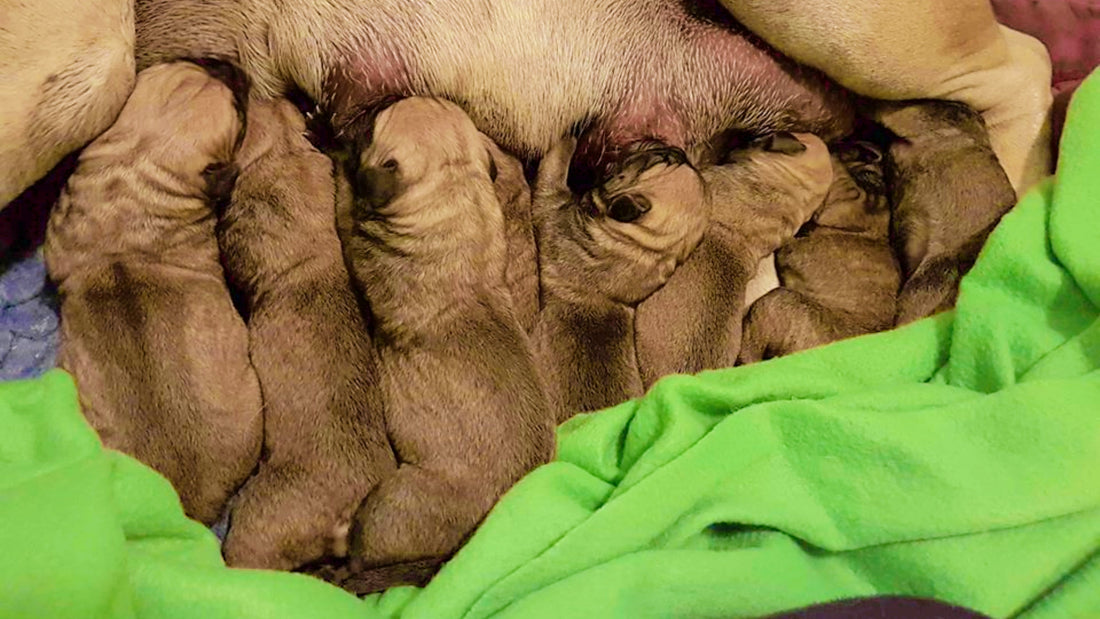
The Science Behind Nursing: Hormonal and Neurological Influences in Lactating Dam
Share
Nursing in Dogs: Hormonal & Neurological Insights
Learn how hormones and the nervous system guide nursing, milk let-down, and maternal care in dogs. Essential insight for breeders.
When a dam begins nursing her puppies, it’s not just instinct at play—it’s a finely tuned process controlled by both hormonal changes and the central nervous system (CNS). Together, they create the ideal environment for successful lactation, maternal care, and neonatal survival. For breeders, understanding these mechanisms can shed light on why some dams excel at nursing while others may need more support.
Hormonal Drivers of Nursing
The two key hormones involved in lactation are oxytocin and prolactin.
Oxytocin is responsible for the “let-down reflex.” Triggered by the puppies’ suckling, oxytocin causes the milk to be released from the mammary glands. It also plays a powerful role in maternal bonding, encouraging the dam to nurture her puppies.
Prolactin supports ongoing milk production. Levels rise after birth and remain elevated throughout lactation, ensuring a steady supply of milk as long as puppies are feeding.
Stress, however, can inhibit oxytocin release. A dam who is anxious, uncomfortable, or recovering from a difficult whelping may struggle with milk let-down. In such cases, breeders can help by keeping the whelping area calm, warm, and safe.
The Role of the Central Nervous System (CNS)
While hormones provide the “fuel,” the CNS fine-tunes responsiveness. During lactation, the dam’s nervous system becomes selectively reactive to her puppies’ signals. For example:
- A newborn’s squeak can trigger the dam to shift position and allow access to milk.
- A puppy’s rooting behaviour stimulates maternal licking, which helps with bonding and elimination.
- Repeated suckling builds feedback loops in the CNS, reinforcing milk let-down patterns.
This neurological adjustment ensures that the dam is “tuned in” to her litter, responding quickly and effectively to their needs.
When Things Don’t Go Smoothly
Sometimes, hormone or CNS disruptions can affect nursing:
Poor milk supply may be linked to low prolactin or stress-related oxytocin suppression.
Maternal neglect can occur if the dam’s nervous system does not adapt properly.
Hypocalcaemia (low calcium) can disrupt both behaviour and milk production by impairing neuromuscular function and overall health. Providing additional Calcium Supplements can benefit in these cases.
Where there is poor milk supply, breeders may need to step in with supplemental feeding of pups. Syringe, Bottle or Tube Feeding provides a safe way to support puppies when the dam cannot nurse effectively.
Supporting Healthy Nursing
To give both dam and puppies the best start:
- Keep the whelping area calm, Warm, and quiet.
- Ensure the dam receives adequate nutrition and supplement with calcium during lactation if advised to do so.
- Monitor puppies’ weight daily with a growth chart to confirm they’re thriving.
- Use F10 Veterinary Disinfectants to maintain a hygienic environment without the risk of harming newborn pups.
- Seek Veterinary advice if you have concerns.
Final Thoughts
Nursing is more than just feeding—it’s a complex interaction between hormones, the nervous system and maternal behaviour. By understanding these influences, breeders can better support dams during this critical stage, stepping in when needed to ensure every puppy receives the care and nutrition they require.
